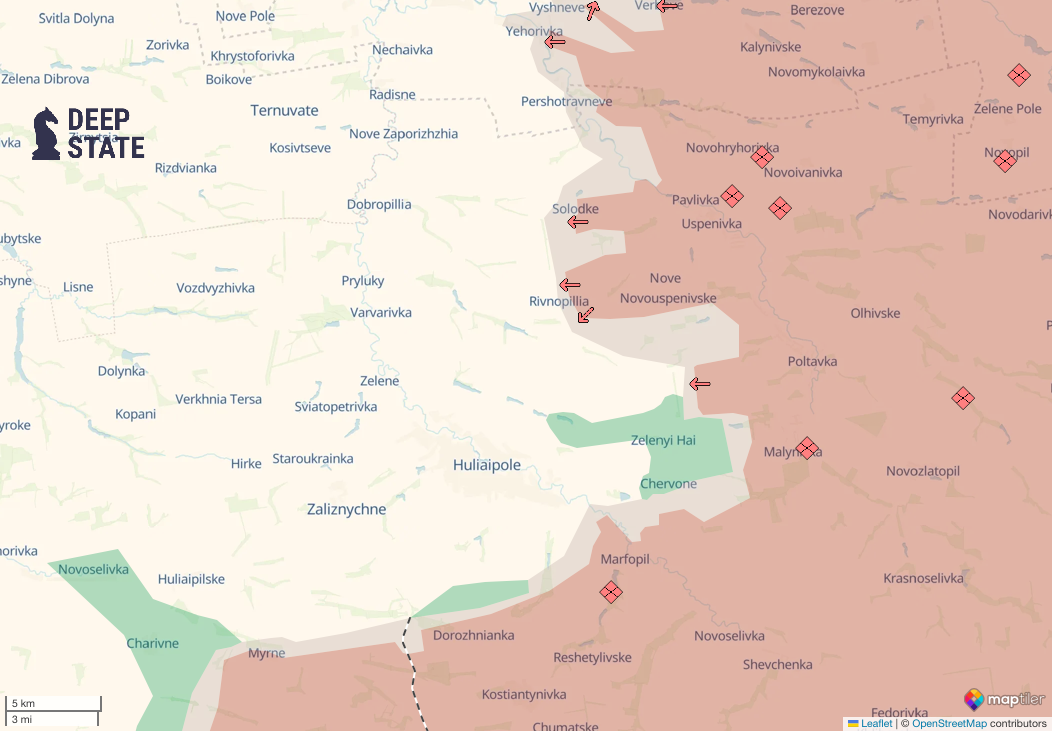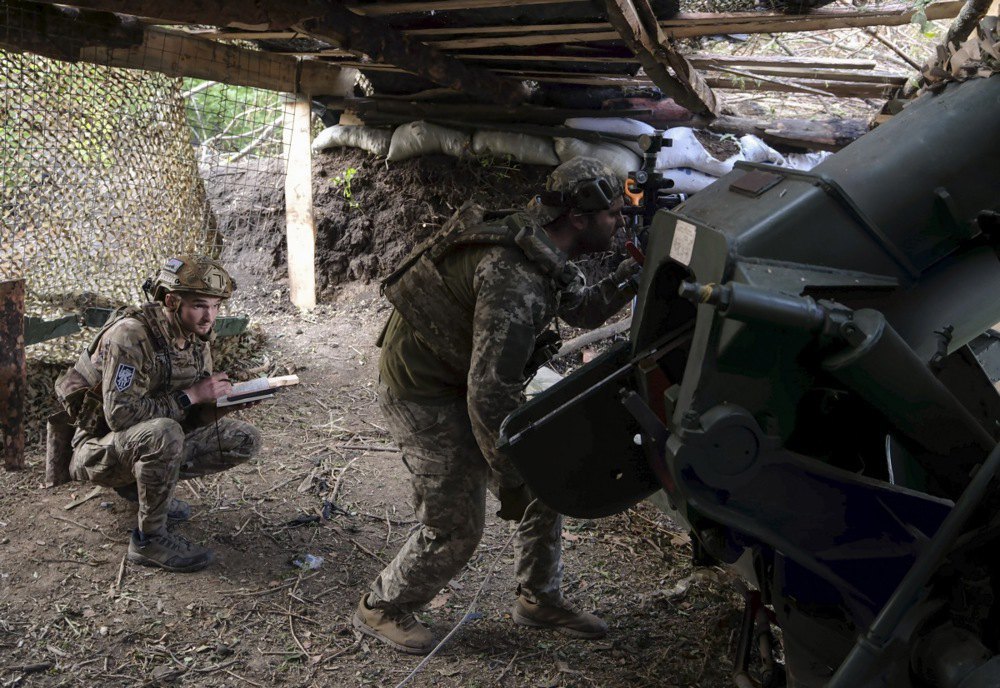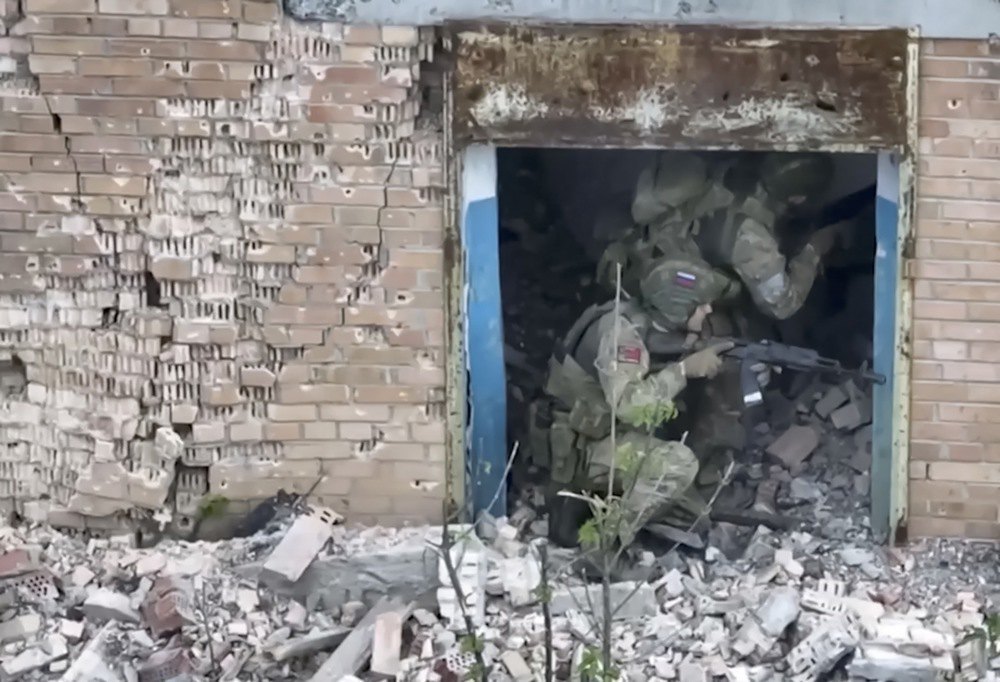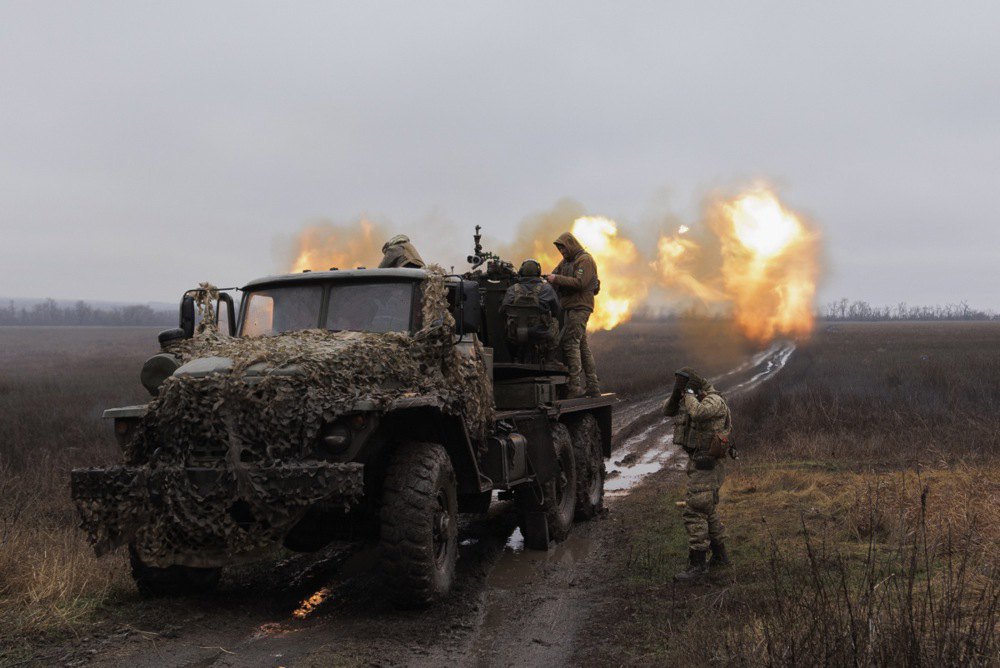
The Russian achievements from 1 September to mid-November are roughly as follows:
— Advance near Stepnohorsk – up to 5 km along the flooded area formed after the Kakhovka Reservoir dam was blown up. Near Mali Shcherbaky, Stepove and Nesteryanka, there has been virtually no change, with the line of engagement varying by hundreds of metres;
— Almost no advance near Hulyaypole: around Malynivka, Marfopol, Dorozhnyanka and Myrne, though to the east and west the enemy is advancing quite actively – covering 15 km from Olhivske to Rivnopillya, or about 200 metres per day. This may seem insignificant, yet it cannot be stopped. From Temyrivka to Pershotravneve – 17 km. Novohryhorivka, Novoivanivka, Pavlivka, Uspenivka, Olhivka and Poltavka have been occupied for 70 days. The aggressor is now fighting for Solodke, Rivnopillya and Novouspenivske.
Along the H15 highway in the Donetsk Region, the enemy is conducting combat operations along the Novoselivka–Vorone–Verbove–Vyshneve–Yehorivka–Pershotravneve line. Advancement in the southern part is 17 km, and in the northern part – 4.5 km. This is where the enemy’s movement is most dynamic. The enemy captured Uspenivka and, in the Pershotravneve–Okhotnyche section, reached the Yanchur River, crossed it and is developing an offensive.

The enemy has developed its offensive most actively and successfully in the areas of the 29th, 36th and 5th Armies. The 37th Motorised Rifle and 5th Tank Brigades of the aggressor’s 36th Army captured Sichneve and Vorone, reaching the Novoselivka–Sosnivka line. They advanced 4 km in a week of fighting. Units of the 29th Army are fighting for Oleksandrohrad and Zelenyy Hay, repelling counterattacks by the Defence Forces, which have significantly slowed the enemy’s progress.
A tactical group (conditionally defined, for simplicity of understanding joint actions) consisting of units of the 127th Division, and the 57th and 60th Brigades of the 5th Army, is advancing on a broad front from Komyshuvakha to Ternove and from Zaporizhzhya to Berezove, fighting for Novomykolayivka. The 69th Brigade, under the cover of the 35th Army, periodically attacks alongside this group.
In the east of the Zaporizhzhya Region, the enemy has a significant advantage in manpower: three to four enemy battalions are attacking each of ours, and five to six in breakthrough areas. The Defence Forces units are exhausted, with some having only 30–40% of their personnel remaining. It is evident that under such conditions it is unrealistic to create a defence of adequate tactical density – these are pockets in critical areas, with the gaps between them covered by fire and obstacles, and in the absence of fire and tactical communication – UAVs.
This state of affairs in the Defence Forces is no secret to the enemy. Its reconnaissance and assault groups are constantly searching for ways to bypass pockets of resistance and gaps in combat formations, and they widely – and, unfortunately, successfully – employ infiltration tactics. The enemy acts suddenly, covertly and swiftly, using darkness, adverse weather conditions and individual camouflage devices, particularly thermal insulation capes.

Small infantry groups infiltrate assembly points, immediately secure them for defence, await reinforcement groups, and carry out the next thrust. Slowly but steadily, the aggressor continues its westward advance.
The Defence Forces are limited in their response, although all means are being used to detect the movement of enemy groups and their concentration points in a timely manner. However, the low staffing levels of infantry units do not allow the creation of sufficient counter-sabotage reserves or the timely clearing of necessary areas. This is where the National Guard units, which should be trained for such actions, could prove useful – yet they are also lacking.
All this is taking place against the backdrop of an uncompromising struggle in the limited airspace.
The situation in the Zaporizhzhya Region, particularly in its eastern part, is significantly more complex and dangerous than near Pokrovsk. The tactical gains demonstrated by the enemy appear unfavourable for the Defence Forces, which remain unable to halt the enemy or stabilise the situation.

The development of the situation in this direction suggests that the objectives of the Vostok Operational Command are to break through to Pokrovske while simultaneously cutting off the Defence Forces’ communications from the Hulyaypole defence area in the northern direction, towards Pokrovske itself.
The command of the Vostok Operational Command may shift the axis of its main strike from Hulyaypole to the southern part of the 5th Army’s offensive zone. After the occupation of Novoivanivka and Uspenivka, attacks on our defence nodes in Velykomykhaylivka and Pokrovske should be anticipated. The enemy may encircle Hulyaypole from the north and simultaneously disrupt the logistics of the Defence Forces defending the city.
A shift in the enemy’s main direction of attack should be expected after it captures Velykomykhaylivka and/or Pokrovske.








